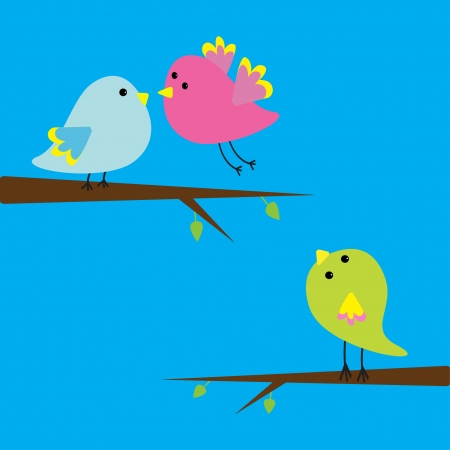1. The Importance of Mental Stimulation for Pet Birds
Just like humans, birds need mental stimulation to stay happy and healthy. In the wild, they spend their days flying, foraging for food, solving problems, and interacting with their environment. When kept as pets, they rely on their owners to provide opportunities for mental engagement. Without it, birds can become bored, stressed, or even develop behavioral issues such as feather plucking or excessive screaming.
Why Mental Stimulation Matters
Mental stimulation is crucial for a birds overall well-being. It helps prevent boredom, reduces stress, and encourages natural behaviors that keep them physically and emotionally healthy. A mentally engaged bird is more likely to be active, curious, and interactive with its surroundings.
Benefits of Mental Stimulation
| Benefit | Description |
|---|---|
| Reduces Boredom | Prevents destructive behaviors like feather plucking and excessive screaming. |
| Encourages Natural Behavior | Mimics activities birds would do in the wild, such as foraging and problem-solving. |
| Boosts Physical Health | Keeps birds active and prevents obesity-related health issues. |
| Strengthens Bonding | Engaging playtime enhances the relationship between you and your bird. |
The Role of Play and Foraging in Mental Stimulation
Two of the best ways to provide mental engagement for pet birds are through play and foraging activities. These not only keep them entertained but also encourage problem-solving skills and physical activity.
Toys for Mental Engagement
Boredom can be prevented by offering a variety of toys that challenge your bird’s mind. Puzzle toys, shreddable items, and interactive games stimulate curiosity and encourage exploration.
Examples of Engaging Toys:
- Puzzle Feeders: Encourage birds to work for their food by solving simple challenges.
- Chew Toys: Provides a safe way for birds to satisfy their natural urge to chew.
- Maze Toys: Stimulates problem-solving skills by requiring birds to maneuver objects through obstacles.
- Swing & Climbing Toys: Keeps birds physically active while providing entertainment.
The Importance of Foraging Activities
Foraging is a natural behavior that keeps birds mentally stimulated. In the wild, they spend hours searching for food, so incorporating foraging into their daily routine mimics this essential activity.
Simple Foraging Ideas:
- Hidden Treats: Hide small treats in paper cups or inside safe toys to encourage problem-solving.
- Diy Foraging Boxes: Fill a small box with shredded paper and hide treats inside for your bird to discover.
- Treat-Dispensing Toys: Use store-bought or homemade treat dispensers to make mealtime fun and engaging.
Mental stimulation plays a key role in keeping pet birds happy and healthy. By understanding its importance and incorporating engaging activities like play and foraging into your bird’s daily routine, you can ensure they live a fulfilling life filled with excitement and enrichment.
2. Encouraging Natural Foraging Behavior
In the wild, birds spend a significant portion of their day searching for food. This natural foraging behavior keeps them mentally engaged and physically active. Pet birds, however, often have easy access to food, which can lead to boredom and lack of stimulation. By incorporating food puzzles, hidden treats, and interactive feeding methods, you can encourage your bird to engage in natural foraging activities.
Ways to Mimic Natural Foraging Experiences
1. Food Puzzles
Food puzzles challenge your bird to work for its food, providing both mental stimulation and entertainment. These puzzles come in different types and difficulty levels, so you can choose one that matches your bird’s skill level.
| Type of Food Puzzle | Description | Best For |
|---|---|---|
| Foraging Boxes | A small box filled with shredded paper, where treats are hidden inside. | All birds |
| Puzzle Feeders | Treats are placed inside a feeder that requires manipulation to release the food. | Medium to large birds |
| Rolling Treat Dispensers | A ball or cylinder that dispenses food as it rolls around. | Active birds that enjoy movement |
2. Hidden Treats
Hiding treats around your bird’s cage or play area encourages exploration and problem-solving. You can wrap treats in paper, tuck them into wooden toys, or place them under leaves or safe materials.
3. Interactive Feeding Methods
Instead of offering food in a bowl, try using interactive methods such as:
- Scattering Seeds: Spread seeds across a clean surface or inside a foraging tray filled with natural materials like hay or shredded paper.
- Hanging Food: Attach fresh fruits or veggies to the cage bars or hang them from a bird-safe skewer to make mealtime more engaging.
- DIY Foraging Toys: Use paper cups, cardboard tubes, or coconut shells to create homemade foraging toys filled with treats.
Tip:
If your bird is new to foraging activities, start with simple challenges and gradually increase the difficulty level as they become more comfortable with the process.
Encouraging natural foraging behavior not only keeps your bird entertained but also helps prevent behavioral problems caused by boredom. By making mealtime an interactive experience, you ensure that your feathered friend stays happy and mentally stimulated.

3. Toys and Activities to Keep Your Bird Engaged
Providing a variety of toys and activities is essential for keeping your bird mentally stimulated and engaged. Birds are intelligent creatures that need constant enrichment to stay happy and healthy. By exploring different types of toys and rotating them regularly, you can prevent boredom and encourage natural behaviors like foraging, problem-solving, and chewing.
Types of Toys for Mental Stimulation
Different toys serve different purposes in keeping your bird entertained. Here are some common toy categories that provide mental stimulation:
| Type of Toy | Description | Benefits |
|---|---|---|
| Shreddable Toys | Made from paper, cardboard, or soft wood that birds can tear apart. | Satisfies natural chewing instincts and helps prevent feather plucking. |
| Puzzle Toys | Toys with hidden treats that require birds to figure out how to access them. | Encourages problem-solving skills and mimics natural foraging behavior. |
| Noisy Toys | Bells, rattles, or toys that make sounds when played with. | Keeps birds entertained and provides auditory stimulation. |
| Swinging & Climbing Toys | Ladders, ropes, and swings that encourage movement. | PROMOTES physical activity and improves balance and coordination. |
| Mimicry & Interactive Toys | Toys that respond to touch or sound, such as talking buttons. | Keeps birds engaged by mimicking social interactions. |
The Importance of Toy Rotation
Your bird can quickly lose interest in a toy if it’s always available. To keep things exciting, rotate their toys every few days. Here’s how you can effectively rotate toys:
- Create a toy rotation schedule: Swap out a few toys every 3-4 days to keep them fresh.
- Add new textures and challenges: Introduce different materials like leather, fabric, or coconut shells to maintain interest.
- Mimic the wild environment: Hide food inside puzzle toys or wrap treats in paper for your bird to “forage” through.
- Avoid overcrowding: Too many toys at once can be overwhelming. Keep a balanced number of items in their cage.
D.I.Y. Enrichment Ideas
You don’t have to spend a lot on expensive toys—many fun options can be made at home! Try these simple D.I.Y. ideas:
- Papercraft Foraging Balls: Stuff shredded paper inside a small cardboard ball with hidden treats inside.
- Popsicle Stick Chew Toy: Tie together colored popsicle sticks with bird-safe rope for chewing fun.
- Coffee Filter Foraging Pouch: Place treats inside an unbleached coffee filter, twist it closed, and let your bird tear it open.
- Cereal Loop Swing: String unsweetened cereal loops onto a rope for an edible swing they can nibble on!
Toys and activities play a crucial role in keeping your bird engaged, reducing stress, and promoting natural behaviors. By offering a variety of stimulating items and rotating them regularly, you ensure your feathered friend stays happy and mentally sharp!
4. Interactive Play and Bonding with Your Bird
Engaging in interactive play with your bird is a great way to provide mental stimulation while also strengthening your bond. Birds are intelligent creatures that thrive on interaction, so incorporating fun activities into their daily routine can keep them happy and healthy.
Training Sessions: Teaching Tricks and Commands
Training your bird is not only a great way to teach them new skills, but it also helps build trust between you and your feathered friend. Start with simple commands like “step up” or “wave,” using positive reinforcement such as treats or praise.
Basic Training Ideas
| Training Activity | Description |
|---|---|
| Step Up | Encourage your bird to step onto your finger or hand. |
| Target Training | Use a stick or pointer for your bird to touch with its beak. |
| Retrieve | Teach your bird to pick up and bring back small objects. |
| Spin | Guide your bird to turn in a circle on command. |
Games to Play with Your Bird
Interactive games can help keep your bird entertained while promoting exercise and cognitive development. Try different types of games to see what excites your bird the most!
Fun Game Ideas
- Peek-a-Boo: Hide behind an object and call your bird’s name to encourage interaction.
- Puzzle Toys: Provide toys that require problem-solving, such as treat-dispensing puzzles.
- Toss and Catch: Use soft, lightweight balls for gentle tossing and retrieval.
- Mimicry Games: Repeat sounds or words to encourage vocalization and response.
Create an Engaging Play Environment
A stimulating environment encourages play and exploration. Rotate toys regularly, introduce climbing structures, and set up a safe space where your bird can roam freely under supervision.
Toy Rotation Strategy
| Toy Type | Description |
|---|---|
| Puzzle Toys | Toys that require birds to figure out how to get treats. |
| Noisy Toys | Bells, rattles, or crinkly materials for auditory stimulation. |
| Chewable Toys | Nontoxic wood or shreddable paper for beak exercise. |
| Swing & Ladders | Add movement-based elements for climbing fun. |
The Power of Positive Reinforcement
Praise, treats, and affection go a long way in reinforcing good behavior during playtime. Always make sure interactions remain positive so that your bird associates play with happiness and trust.
5. Creating a Stimulating Environment
Providing a dynamic and engaging living space is essential for keeping your bird happy, active, and mentally stimulated. Birds are naturally curious and thrive in environments that encourage exploration, problem-solving, and movement. A well-designed space with perches, climbing structures, and enriching elements can help prevent boredom and unwanted behaviors.
Choosing the Right Perches
Perches are more than just a place for your bird to stand—they contribute to foot health, exercise, and mental engagement. Offering a variety of perch types can keep your bird comfortable and engaged.
| Perch Type | Benefits |
|---|---|
| Natural Wood Perches | Mimic tree branches, provide varied textures, and promote healthy feet. |
| Rope Perches | Soft on the feet and great for climbing or swinging. |
| Ladder Perches | Adds climbing opportunities and encourages movement. |
| Cement or Sanded Perches | Aids in keeping nails trimmed but should be used sparingly. |
Incorporating Climbing Structures
Birds love to climb, hang, and explore different levels of their environment. Adding climbing structures can encourage natural behaviors while keeping them physically active.
- Ladders: Perfect for encouraging movement between perches.
- Nets: Provides an exciting challenge for birds that love to climb.
- Bungee Ropes: Adds an element of fun with gentle bouncing motion.
- Tunnels & Hideouts: Encourages exploration and provides a sense of security.
Enriching Elements to Keep Your Bird Engaged
A stimulating environment goes beyond physical structures—it also includes activities that engage your birds mind. Rotating toys, foraging stations, and interactive play areas can make a big difference.
Toy Rotation
Your bird may lose interest in toys if they remain unchanged for too long. Try rotating different types of toys weekly to keep things fresh and exciting.
Foraging Opportunities
Mimicking natural foraging behaviors keeps birds mentally engaged. Hide treats inside paper rolls, use foraging trays filled with shredded paper, or try puzzle feeders designed for birds.
Sensory Stimulation
Add safe natural elements like bird-safe plants, bells, mirrors (for some species), or even soft music to create a dynamic atmosphere that keeps your feathered friend happy.
The Importance of Space & Variety
A well-organized environment that changes periodically will keep your bird interested and engaged. Rearranging perches, introducing new textures, and offering new challenges can make daily life more exciting for your pet bird.


